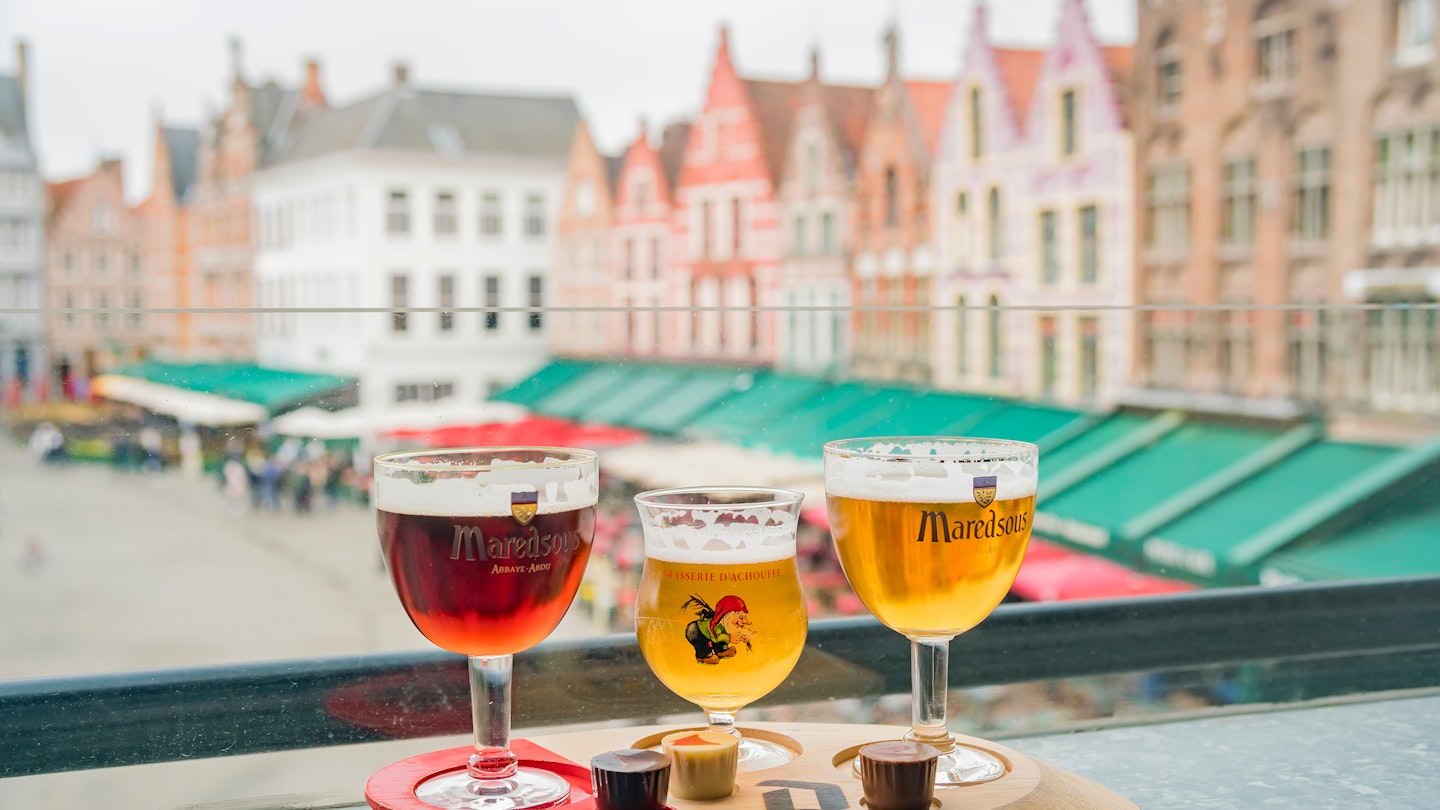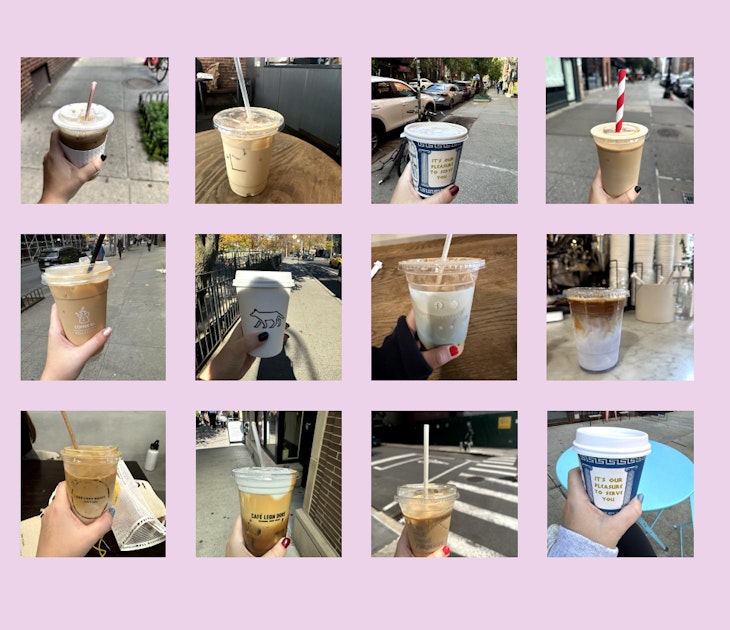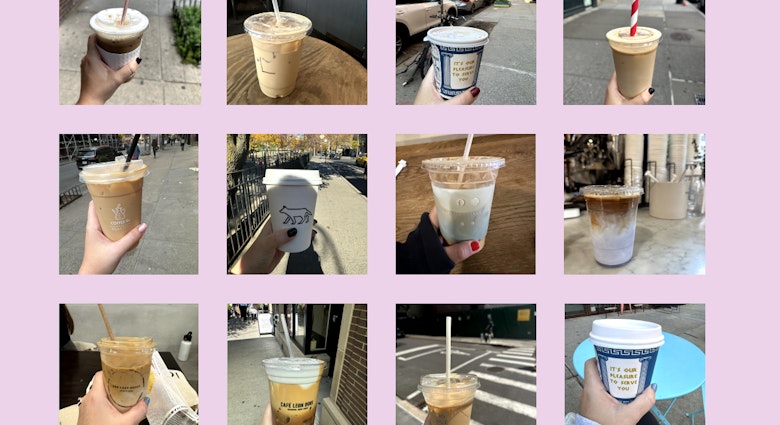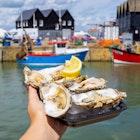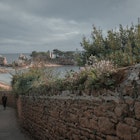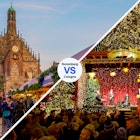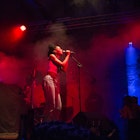Belgian beer is world-renowned – Belgium is the only country whose beer culture is inscribed on UNESCO’s Representative List of the Intangible Cultural Heritage of Humanity.
This small nation is home to the biggest brewery in the world, as well as tiny, independent operations located on farmsteads, in old factories, and in cave-like casemates. “In Belgium, the magistrate has the dignity of a prince,” wrote Belgian poet Émile Verhaeren. “But by Bacchus, it is true that the brewer is king.”
So what makes Belgian beer so special? Let's dive in.
A brief history of Belgian beer – and three reasons why it’s so famous
Belgium’s brewing landscape evolved across rural farmland, small towns and monasteries, mushrooming around communities and instilling a resistance to the mass production techniques that took hold much more quickly in neighboring countries. Here are some of the reasons Belgium’s local beer culture evolved into a global phenomenon:
Geography
To Belgium’s west is France and its myriad winemakers, from whom Belgian brewers absorbed knowledge about the microbiological benefits of oak aging in large foeders. To the country's east lies Germany, where technical proficiency in lager fermentation and yeast management influenced quality control in Belgian brewing. And to the north, just across the channel, sits England, influencing both brewing and hop growing in Belgium, particularly after WWI.
This mishmash of influences (and the fact that Belgium has been ruled by various regimes) encouraged Belgians to develop practical workarounds and create new and unique beers.
Regionality
Despite its relatively small size, Belgium's beer diversity impresses even the most experienced brewheads. This begs the question, why so many regional specialities? In the early to mid-19th century, the average Belgian brewery was very small, mostly because there was a tax incentive to remain so. Rather than packaging beer, they were selling beer from wooden barrels directly to consumers in their own pubs.
In 1845, there were 3089 breweries in Belgium – today, there are just around 380. As a result, production and consumption has stayed local, preserving distinctive varieties of yeast and maintaining the unique character of a town’s beer style. This limited reach is the reason why Lambic beer is still found in the Pajottenland and the Senne Valley, why Oud Bruin production remains strongest in South West Flanders and why Saison is still most associated with the province of Henegouwen.
Ingredients and process
Belgian yeasts kick off a pronounced range of flavor and aroma compounds when compared to yeasts from other countries. Because of these compounds, Delirium Tremens evokes the essence of pears and oranges, Chimay Bleue tastes like figs and prunes, and Sint Bernardus Wit embraces the zest of pepper and clove.
And Belgians are not afraid to add flavors to their beer, either, whether it entails emptying their spice cabinet of bitter orange, coriander and grains of paradise, or throwing in fruits such as cherries, raspberries, or apricots.
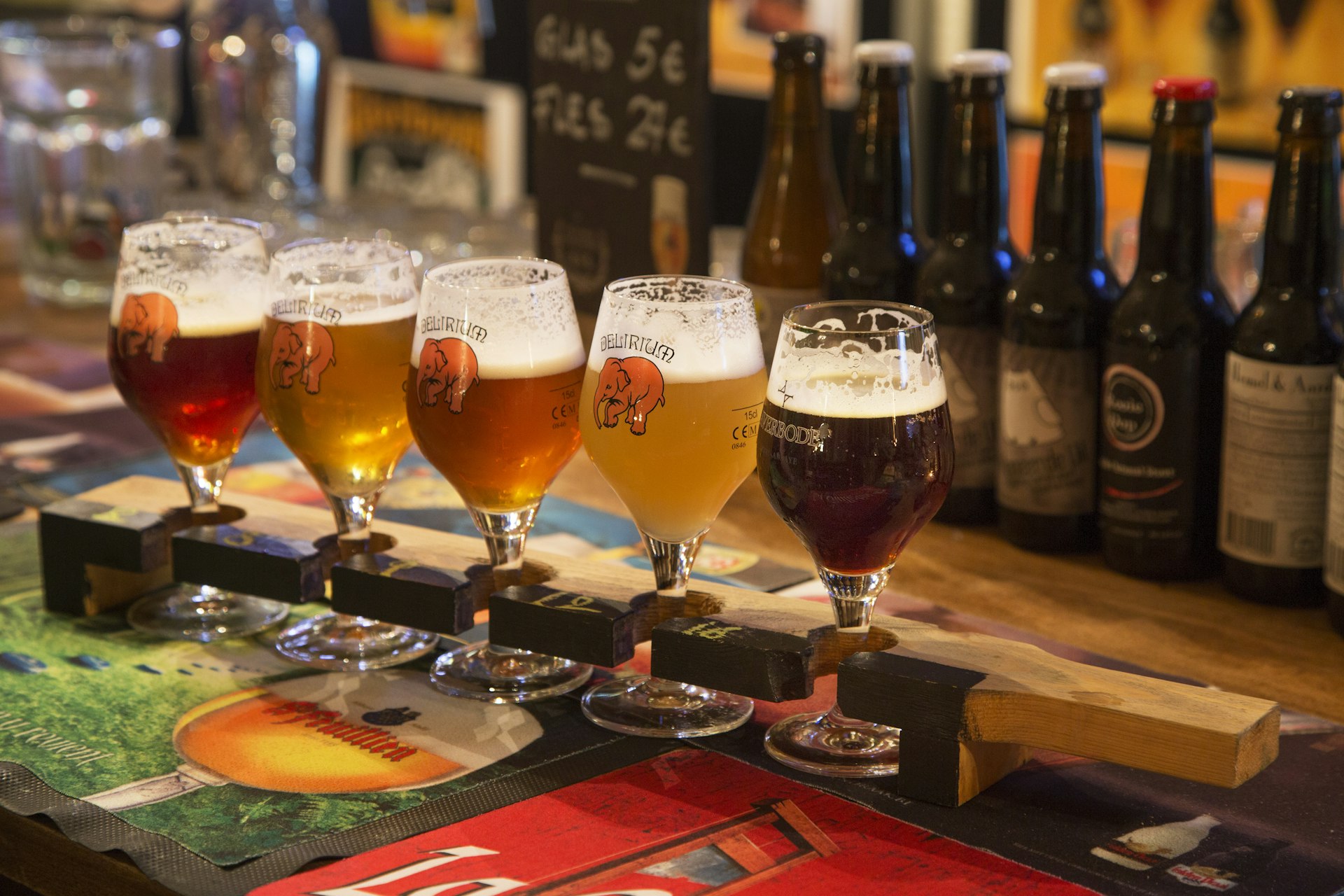
Glassware in Belgium: the theater of Belgian beer
Presentation functions as a key element of Belgian beer culture, particularly when it comes to glassware – it’s one part marketing, one part theater, and one part attempt to maximize the beer experience. From goblet to tulip and from shaker to stange, a lot goes into the decision: the level of alcohol, desired serving temperature, aromatic qualities, level of carbonation, and handling dynamics.
There are also practical considerations: how easy a glass is to clean, how “stackable” it is, and of course, how much it costs. The resulting array of available glassware includes beauties like the bulbous Kasteel chalice from Brouwerij Van Honsebrouck in Izegem, the ridged Ronceva stem of Palm’s Cornet glass, or the curvaceous, inwardly tapered vase of Brugge Tripel.
One innovative feature that has become increasingly popular in Belgian glassware is the nucleation point, an etched mark on the bottom of the inside of the glass that helps release the carbonation by creating a steady stream of bubbles emanating from the nucleated pattern to the top of the beer. Take a moment to notice these bespoke nucleation designs at the bottom of the next glass of Belgian beer you drink. But figure out a way to remove the beer from the glass first.
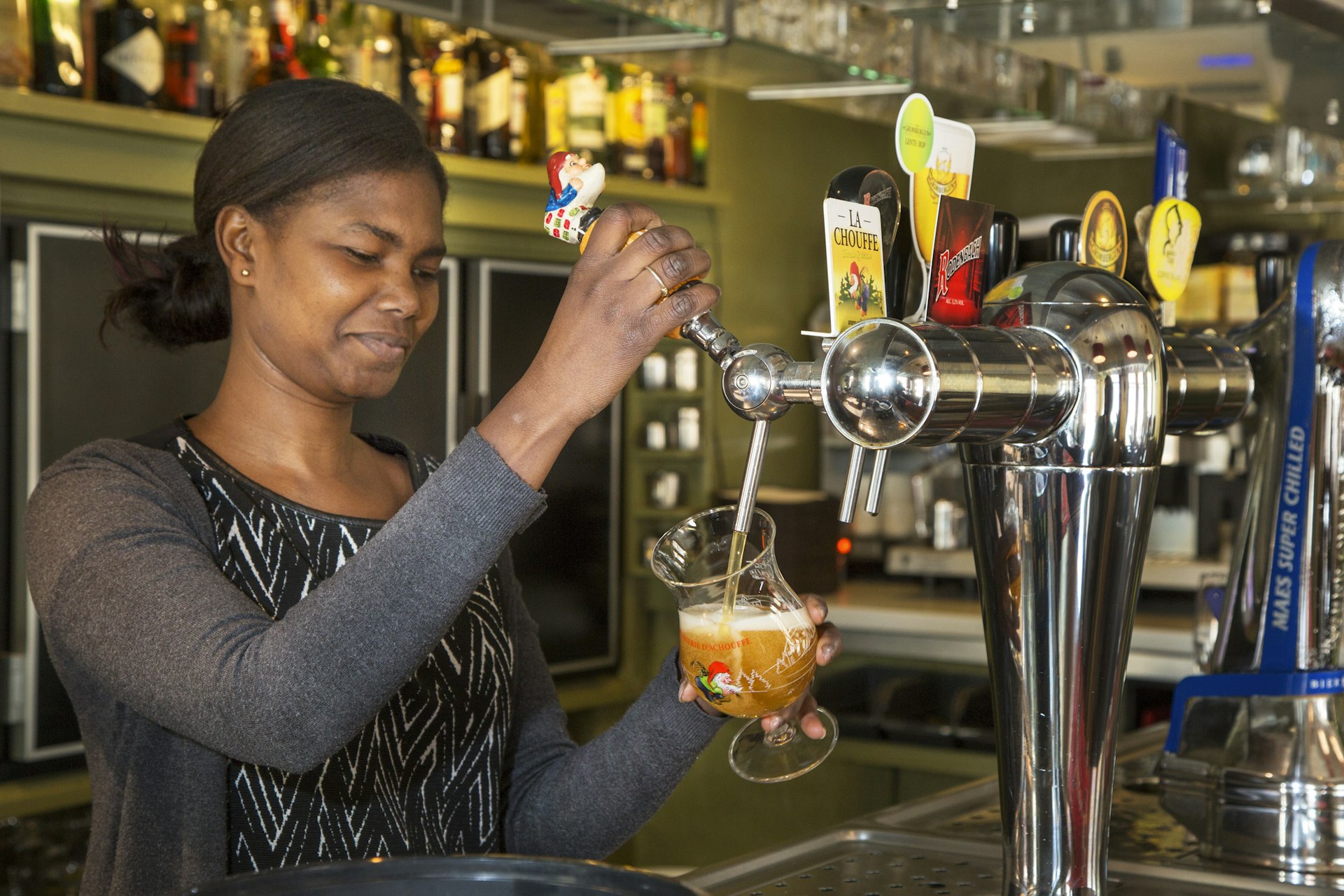
The seven styles of Belgian beer
Belgium has a rich and diverse line-up of indigenous beer styles. While there are many variations within each one – and much over-lapping between them – certain widely regarded traditional categories help drinkers understand what to expect from a beer’s flavor profile:
1. Abbey-style or monastic ale
There are six Trappist breweries in Belgium, all brewing different styles of beer (Belgian Pales Ales, Tripels, Dubbels, Quadrupels, etc). “Trappist” is not a style, then, but an appellation tied to the fact that brewing takes place inside the walls of a Cistercian Abbey under the supervision of monks, with the proceeds of beer sales going back to the community. These beers have inspired a whole wave of “Abbey beers,” often bottle-conditioned ales with pronounced yeast profiles, high carbonation, and plenty of alcohol. Many are produced by commercial breweries and have no affiliation with an Abbey, although some breweries license the name from a monastery.
Abbey-style of monastic ales to try:
Westmalle Tripel (9.5% ABV, Brouwerij Westmalle)
Trappist Westvleteren 8 Dubbel (8% ABV, Brouwerij Westvleteren)
Orval Trappist Ale (6.9% ABV, Brasserie d’Orval)
2. Blond and golden strong ales
Belgian Blond Ales have a subtle citrus and spice yeast complexity, with a degree of malty sweetness and a soft finish. Golden Strong Ales share these yeast flavors and malty mouthfeel but often showcase more hop character, more alcohol, drier finishes, and even more intense carbonation.
Blond and golden strong ales to try:
Ename Blond (6.6% ABV, Brouwerij Roman)
Omer (8%, Brouwerij Omer Vanderghinste)
Duvel (8.5% ABV, Brouwerij Duvel Moortgat)
3. Saisons
Saisons are a family of refreshing, dry, hoppy, and fairly bitter Belgian ales. They’re often highly carbonated, with aromas and flavors of citrus and pepper. Saisons are “provision” ales from Wallonia, the southern region of Belgium. While the origin story to Saison has been disputed, some claim that the beers were produced as an economic necessity for farms who had to retain and occupy their saisonnière (seasonal) workers during the off-season – those saisonnières brewed during the winter and quenched their thirst with the beers in the summer as they toiled the land.
Saisons to try:
Saison Dupont (6.5% ABV, Brasserie Dupont)
Saisonneke Extra (4.4% ABV, Brouwerij Belgoo)
La Saison d'Epeautre (6% ABV, Brasserie De Blaugies)
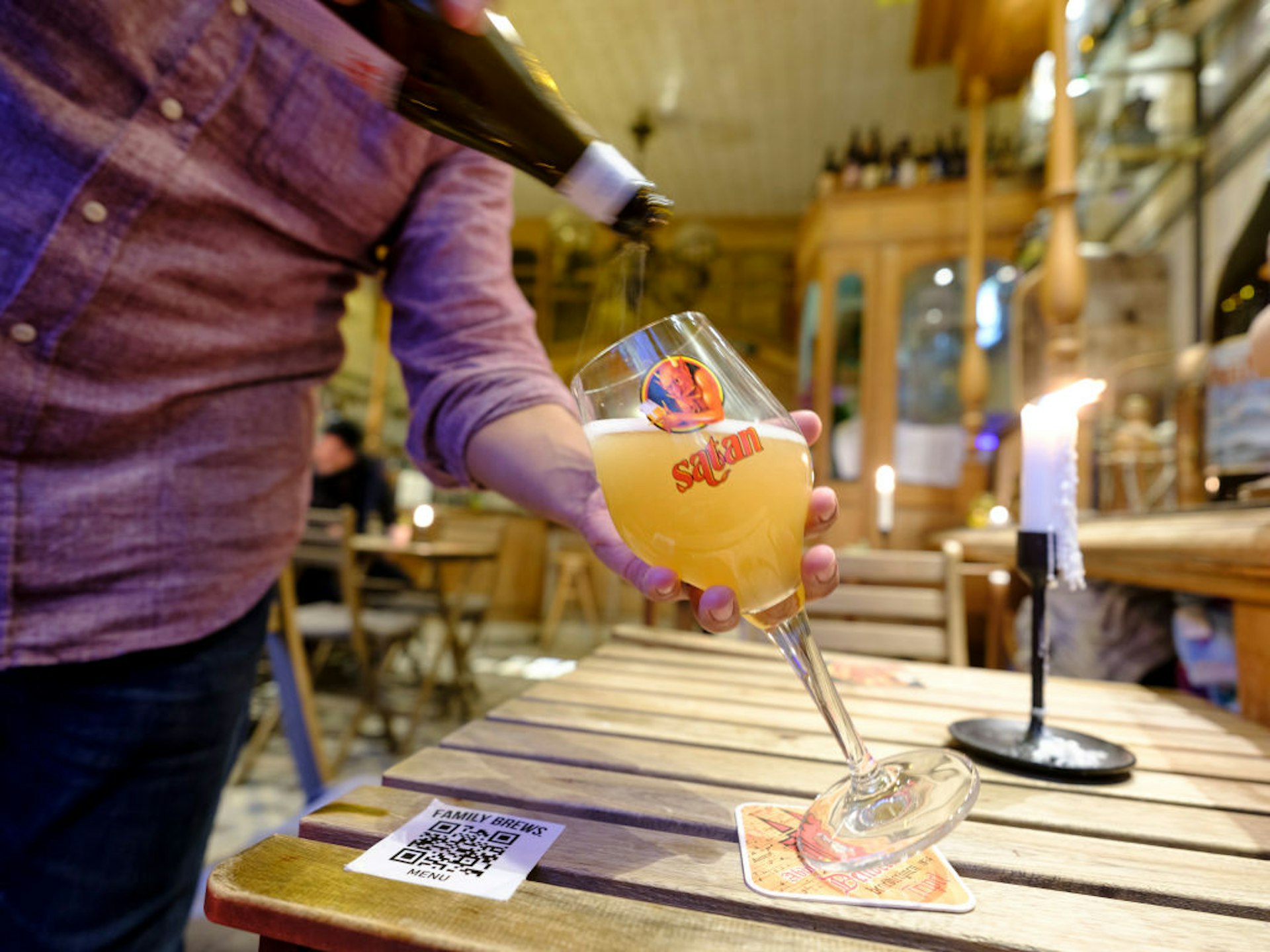
4. Spéciale Belge
Created during an early-1900s competition to come up with a regional specialty beer that competed with imported British ales and continental lagers, Spéciale Belges are malty, average-strength beers with a red or copper color. There’s a subtle fruitiness from the yeast and a bready (sometimes toasty) malt character, but overall they’re known to be well-balanced and easy-drinking.
Spéciale Belges to try:
Bolleke De Koninck (5.2% ABV, Brouwerij De Koninck)
Palm Spéciale (5.2% ABV, Brouwerij Palm)
Spécial De Ryck (5.5% ABV, Brouwerij De Ryck)
5. Belgian wheat beers
Belgian wheat beers (also “white beers” or “witbiers”) are pale, hazy beers brewed using 30-60% of raw wheat. Coriander seed and dried Curaçao orange peel are often added to accentuate the mildly fruity-spicy character of the witbier yeast. Belgian wheat beers are delicate, moderate-strength ales known for their refreshing qualities during the summer.
Belgian wheat beers to try:
Sint Bernardus Wit (5.5% ABV, Brouwerij Sint Bernardus)
Jan de Lichte (7.5% ABV, Brouwerij De Glazen Toren)
Ertvelds Wit (5% ABV, Brouwerij Van Steenberghe)
6. Oud Bruin
Oud Bruin is a family of reddish-brown or brown beers with a caramel-chocolate malt flavor and a red-fruit complexity. They are often both sweet and sour, and sometimes present with a dry, tannic finish like a vintage red wine.
Oud Bruins to try:
Rodenbach Vintage (7% ABV, Brouwerij Rodenbach)
Cuvée des Jacobins (5.5% ABV, Brouwerij Omer Vanderghinste)
Liefmans Goudenband (8% ABV, Brouwerij Liefmans)
7. Lambic beers
Lambic is a spontaneously fermented wheat beer aged on wood. No yeast is pitched by the brewer. Instead, the yeast and bacteria in the vicinity of the brewery transform it into beer. Lambics are blended into Geuzes to become very refreshing, highly carbonated, and pleasantly sour beers which are often complex, oaky, and fruity. Brewers commonly blend Lambic with fruit, particularly cherries, raspberries and apricots.
Lambic beers to try:
3 Fonteinen Oude Geuze (6% ABV, Brouwerij 3 Fonteinen)
Boon Kriek Mariage Parfait (8% ABV, Brouwerij Boon)
Fou’ Founne (Lambic with Bergeron Apricots) (5% ABV, Brasserie Cantillon)
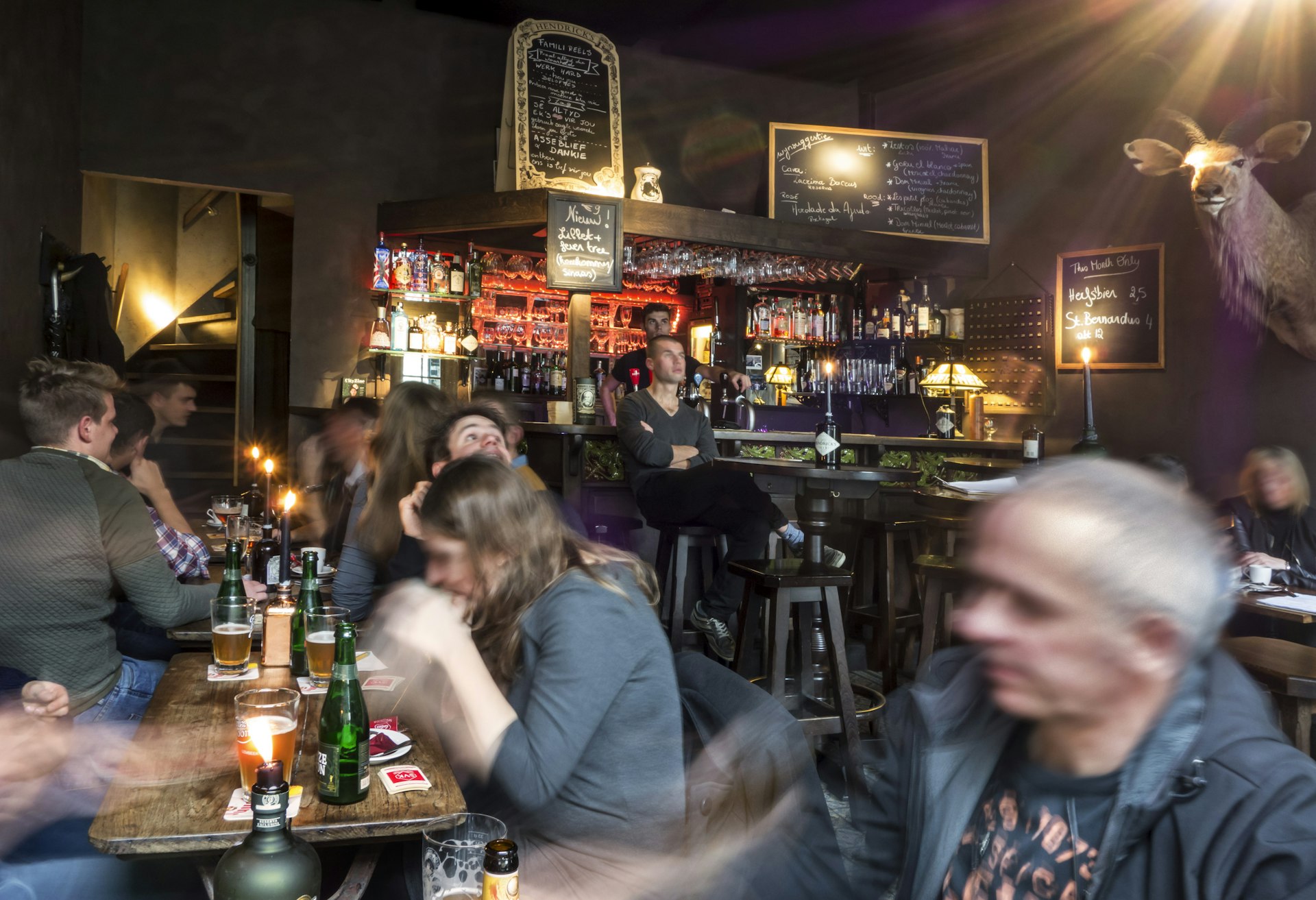
Where to drink Belgian beer
There are many great places to try Belgian beer across the country.
Belgium hosts a beer festival almost every week of the year, too. If you can time it right, take in a traditional event (Zythos, Bruges, or Belgian Beer Weekend), sample a modern festival (Bxl Beer Fest or Billie’s), or dive deep into the niche (Oud Bruin Fest, Kerstbierfestival, Poperinge Hop and Beer Festival, or the Toer de Geuze).
If you’re looking for recommendations of beer cafes, bottles shops, and breweries, check out our list of 25 great places to try beer in Belgium. Mount your bike, get in your car, or jump on a train, and discover the most fun, quirky and interesting places to drink in this country’s fantastic beer culture.

